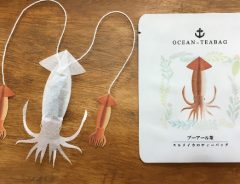Related Article
-

Japanese People Give Their Take On Half-Indian Miss World Japan Beauty Queen
-

Adorable sea animal spoons are ready to take a dip into your mug
-

Unleash The Kraken With Squid And Octopus Tea Bags
-

Haunted And Abandoned Amusement Park In Japan Opens Up For Guided Tour
-

How to turn cheap 7-11 food into a gorgeous Japanese traditional breakfast
-

5 Underrated But Incredibly Beautiful Japan Travel Spots



Copyright cinnamonellie
Kimekomi dolls have a long history behind and the custom of making them is still practiced nowadays by women and craftsmen in Japan.
The art of making Kimekomi dolls or Kurumi e is not that well-known abroad and maybe not so popular among youngsters, however, you will become immersed once you get to know how wonderful this traditional craft is.
The art of making Kimekomi Ningyo (Wooden Dolls)
Copyright cinnamonellie
Quickly evolving in techniques and designs as years pass by, the Kimekomi practice dates way back to the 18th Century and is well-known and appreciated for the luxurious way they look and the precision in the techniques.
Even though the roots of Kimekomi doll making are in Japan, you can also discover bits of Western influence. Various patterns and designs can be observed in the final product and nowadays, you can find a wide number of dolls made through this process. Kimekomi making consists of using materials such as paper, the lacquered board stands wood material and various fabrics.
Dating way back to the Edo Period, Kimekomi dolls has a base of a wooden body and different cloth materials, usually of good quality such as silk or similar fabrics. Kimekomi Hina dolls also gained a lot of popularity and developed a lot during years, each having a unique type of kimono shapes and designs with different colors that will liven up your house.
Very popular among mothers, kimekomi Hina dolls are not only a traditional part of the Japanese lives, but also a nice decoration for their homes.
The eyes are often called “kakime” and are drawn with thin brushes, making the kimekomi dolls have different facial expressions, colors, each looking adorable in their cute outfits matching the atmosphere of your room.
Kurumi E or “Wrapping Pictures”
Copyright cinnamonellie
As the name describes it, the ancient crafts of Kurumi- E consist of wrapping a mount with material and creating a picture. Same as Kimekomi dolls making, it is a beautiful craft and as base paper, you can use cardboards or a sponge for a 3D effect.
I feel that these two crafts represent an important part of the Japanese culture and if you have the time, you should even try making it yourself. I feel that both are very valuable and if you come to Japan, you should try making it or getting one as a unique souvenir that represents the country’s culture.